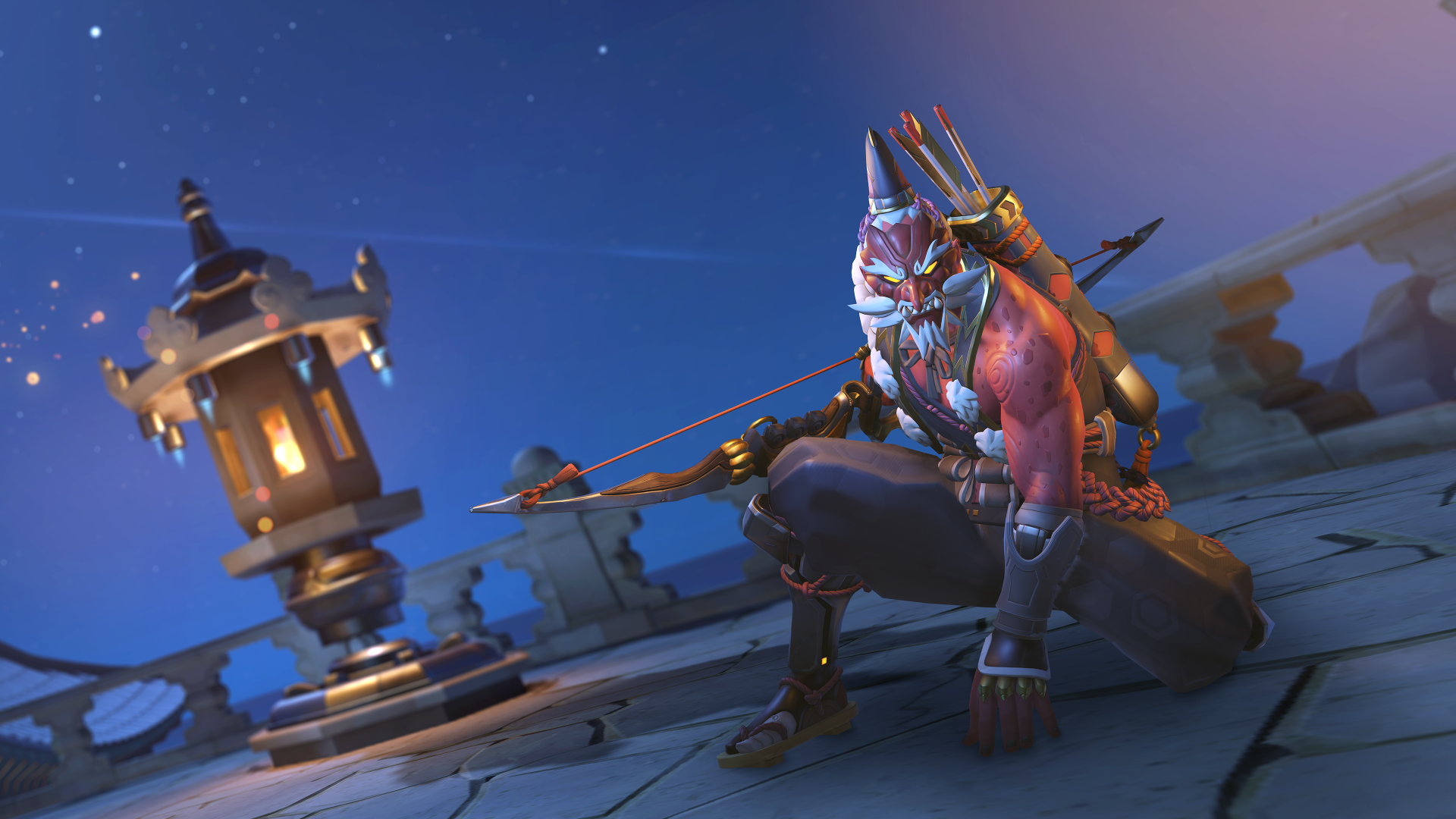It will take you 327 years to get all the originally free items in Overwatch 2
Fast fashion

In Overwatch 2, it will cost you $10,226 / £8,802.08 / AUD$15,742 to buy all the skins and items that were originally free in Overwatch. I’m getting Diablo Immortal flashbacks.
Originally all the skins and items in Overwatch were available for free. Through completing challenges and leveling up, you could get skins, items, and coins for just playing the game. There was an option to buy coins that could go towards skins, items, and loot boxes, but there was no need to do this – I unlocked all the skins I wanted and never once in six years paid for a skin or a loot box.
For those new to Overwatch, loot boxes were something of a mystery package that you could get for leveling up or completing challenges. Inside, you’d find four random items, so you never know exactly what you were going to get.
However, loot boxes are problematic because of their similarities to slot machines. If you wanted a particular skin, you could keep opening loot boxes until it cropped up, or buy it in the store with coins (which you could buy with real money). If you were buying boxes, you could spend a lot of cash chasing a desired cosmetic.
Loot boxes and gambling in games with young audiences isn’t acceptable. However, despite its similarities to gambling, you didn’t need to pay to play – if you had the time to unlock loot boxes through play, you could get the skins you were looking for, or earn the coins to buy the cosmetic in the store. Overwatch never forced you to cough up extraordinary amounts of cash, but now, in Overwatch 2, almost everything is behind a paywall. Whatever the answer to the problem of loot boxes is, this isn’t it.
Arm and a leg
Blizzard’s solution to the problem of loot boxes was to immediately scrap them in Overwatch 2 and replace them with a shop where you can buy all of Overwatch’s new and legacy skins, voice lines, sprays, and other items directly with in-game coins. You can earn the coins by completing challenges or buying them in bundles with real-world money.

Overwatch coins come in bundles of 500, 1000, 2000, 5000, and 10000, but the price of coin works out the same: 100 Overwatch coins is equivalent to roughly $1 / £0.86 / AUD$1.54. Though, the larger coin bundles do come with bonus coins, but let’s try not to complicate things. At first glance, this doesn’t look too bad, it’s only when you see the cost of items you see how bad a deal this is. For example, the Kiriko bundle is 2600 coins, so you will be spending $26 / £22 / AUD$40. While this may be fine for other people, I personally don’t feel comfortable spending that much money on a piece of clothing I can’t even wear.
Sign up for breaking news, reviews, opinion, top tech deals, and more.
In the original Overwatch, you’d get a loot box each time you get enough experience to level up – which was basically after three or four match wins – and if you already owned any of the items in the box before, then you’d get coins instead. This meant that you didn’t have to pay real money to get the skins you wanted, You could just play loads of games and save up until you had enough to buy them in the store.
Even if you did want to buy a loot box, the prices you’d pay are incomparable to what they are now. You could buy 50 loot boxes for $39.99 / £34.99 / AUD$59.95, netting you 200 items – although some would likely be repeats.
There were 2066 items in Overwatch. So, it would take 516.5 loot boxes to get every single item in the game – assuming you got no duplicates when opening boxes, and you almost certainly would have got duplicates, unless you’d pockets full of four leaf clovers and the rabbits’ feet of an entire warren of bunnies. But, let’s just suppose the unlikely happened. Rounding up to 517 loot boxes, it would cost you £185.93 to get every single item in Overwatch. Buying all those legacy items through the store in Overwatch 2 will set you back $10,226 / £8,802.08 / AUD$15,742 – which is the equivalent of 11 harlequin bunnies, who would be very keen to keep their paws, thank you very much.

Now, of course, you’re unlikely to get a perfect run with the loot boxes, but you would at least get coins that you could save up and use to buy the skin you wanted directly from the store.
In Overwatch 2, you can get free coins from completing weekly challenges, but these top out at 60. So, if you want to get all 2000+ legacy items without spending real-world money, you need to save up 1,022,600 coins. Which will take you 327 years.
Let’s put it another way. If you want that Kirkio bundle for 2600 coins and you don’t want to pay any money to get it, it would take you 11 months to complete every weekly challenge.
Either Blizzard has the secret to eternal life stored away, or they are expecting the completion of Overwatch 2 to be a life-consuming quest that you will pass down for 8 generations to come. Sadly, I don’t think either seems very feasible to me.
Wait, this is worse
Blizzard may have been responding to the loot box criticism with good intentions, but what it has created is a hopeless replacement. Before, younger players had a means of accessing skins with a resource they had plenty of: time. With this new system, the only real way to climb into that walled garden is with money.
I’d like to suggest an alternative loot system. Instead of rewarding a level up with a controversial lootbox, why not award coins? This way, the more you play the more you can earn and access the skins you want, but if you don’t have the time to accumulate the coins, you can shortcut the process and just buy the skin you want with cash. Forcing people to spend this amount of money shows that Blizzard has either over-valued its product or under-valued its players.

Elie is a Features Writer for TechRadar Gaming, here to write about anything new or slightly weird. Before writing for TRG, Elie studied for a Masters at Cardiff University JOMEC in International Journalism and Documentaries – spending their free time filming short docs or editing the gaming section for their student publications.
Elie’s first step into gaming was through Pokémon but they've taken the natural next step in the horror genre. Any and every game that would keep you up at night is on their list to play - despite the fact that one of Elie’s biggest fears is being chased.